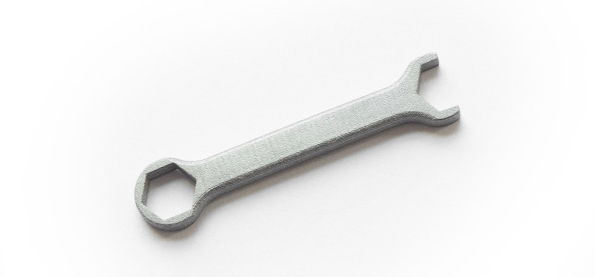Automotive manufacturing has consistently evolved since the first motor vehicle, and more and more companies from around the world are incorporating 3D printing into their manufacturing processes as the technology advances. The automotive industry has always looked for ways to innovate for improved safety, strength, efficiency and style, and 3D printing is allowing for major developments to occur while keeping costs in control. 3D Printing allows for faster and more viable prototyping, the possibility of creating personalized parts and customer experiences and creating complex, high performance end parts that could ultimately reduce a vehicle’s weight and boost fuel efficiency. It also produces more ergonomic manufacturing aids to provide more support to workers in the manufacturing process. All pointing to a future where cars can be safe, aerodynamic, and tailor-made to each driver.
Prototyping
Having the ability to rapidly fabricate prototypes keeps workflows moving steadily and avoids costly pauses in the manufacturing line. This is where 3D printing is most used in automotive manufacturing, as it allows for unparalleled speed in producing, editing and evolving iterations. Prototypes can be made for any stage whether it be as proof of concept or high fidelity prototypes that will better validate parts through the whole manufacturing process. It also allows for manufacturers to test new components and continue developing the way parts are made and contribute to a vehicle’s performance. Small scale prototypes can also be created for marketing purposes, like Volkswagen’s 10,000 tiny metal cars for the launch of their electric car model ID.3 in 2018.
Customization
Many consumers jump at the idea of adding their own flair to the commodities in their lives. The ability to pick out colors, patterns and take part in the design process greatly increases customer satisfaction and is something that 3D printing has enabled manufacturers to do while still keeping costs low. Many automotive companies have begun to introduce custom flourishes and parts to their cars as mass customization becomes much more feasible with 3D printing. In traditional manufacturing, a mold and specific tools would be needed to create each personalized component, but using 3D printing, this is easily achieved by editing the 3D file. Thus, 3D printing allows for the production of small batches of custom design pieces without raising the cost that customization would incur with traditional manufacturing.
BMW’s Mini car makers introduced a personalization service in 2018 called “Mini Yours” in which customers can choose colors and finishes, customize door handles, LED lights and panels, and can even add their own text or signature to various parts.
Similarly, Volkswagen began rolling out individualized cosmetic parts such as key rings, gear shift knobs and tailgates, all of which can feature custom lettering of the customer’s choice to be printed in stainless steel using the HP Metal Jet tool.

Tooling & Manufacturing Aids
3D printing also gives manufacturers the ability to produce lower cost manufacturing aids and tools for custom parts like jigs and fixtures. A 3D printed mold for a new part can provide a higher level of design freedom and 3D printed tools can be lighter and stronger. It also allows for more ergonomic tools for manufacturers. BMW and the Department of Ergonomics at the Technical University of Munich created 3D printed orthotic thumb devices to support and prevent strain for assembly workers. The workers’ thumbs are 3D scanned and each device is molded to fit each person’s thumb.
Creating Complex Designs for New Parts
The ability to produce viable end parts, paired with the design freedom that 3D printing allows for means that more complex and perfectly suited components can be incorporated into vehicles, creating further innovation in aesthetic and performance.
Several German additive manufacturing (AM) companies collaborated on a prototype for a vehicle seat called ULBS that combines safety and comfort with ultra light-weight structure. The prototype uses a filament winding process with parts printed in plastic, stainless steel and backrest cushions printed in Thermoplastic Polyurethane (TPU).
When Volkswagen recreated their 1969 mini bus, they 3D printed aluminium cast wheels using generative design, a method that uses an algorithm to produce many versions of a design idea that the designer can then choose from. They created 3D printed hubcaps with a clear resin that were electroplated to have the appearance of metal. These details allowed them to put a modern design twist on an iconic vehicle.
Bentley’s design studio has taken advantage of 3D printing to produce parts with a high level of intricacy. They have produced grille mesh, side vents and door handles with micro-scale detail precision that would not have been possible using another manufacturing method. They are able to design parts with complex geometries that create a bold aesthetic that builds on their classic designs.
Spare Part Production
As automotive manufacturers begin using 3D printing for general end part production, it also becomes possible to print spare parts as needed. If someone driving an older can model needs a part replaced that is out of production, this leaves the driver in a difficult position. Being able to 3D print that missing part solves that issue without car companies having to maintain an ever expanding inventory of old parts they may never need again. It gives manufacturers the ability to produce rare and hard-to-replace parts on demand while optimizing their inventory.
End Part Production
We’ve seen how manufacturers can use 3D printing for prototypes and select customizable parts, but as 3D printing technology evolves, so does its ability to produce end parts for industrial use. For one thing, 3D printing allows automotive manufacturers to consolidate multiple parts into one, thereby decreasing the vehicle’s overall weight while increasing fuel efficiency.
The materials that 3D printing has to offer are rising to meet the standards for end parts as well. Shapeways has partnered with BASF to provide access to high performance materials including Ultrasint® PP nat 01 and Ultrasint® TPU01 that are well suited to functional automotive end parts because of their versatility and durability.
Another excellent material choice is DSM’s Arnite® T AM1210 (P). Available through Shapeways’ partnership with DSM, this Arnite material is ideal for automotive parts needing to withstand high temperatures. This powder is easy to print with and is also environmentally friendly, as it can be recycled back through the powder bed process.
Whether you’re in the automotive industry looking to incorporate 3D printing for your manufacturing process, or you’re looking for help with additive manufacturing for another industry, we can provide a custom solution to help you scale your business.


